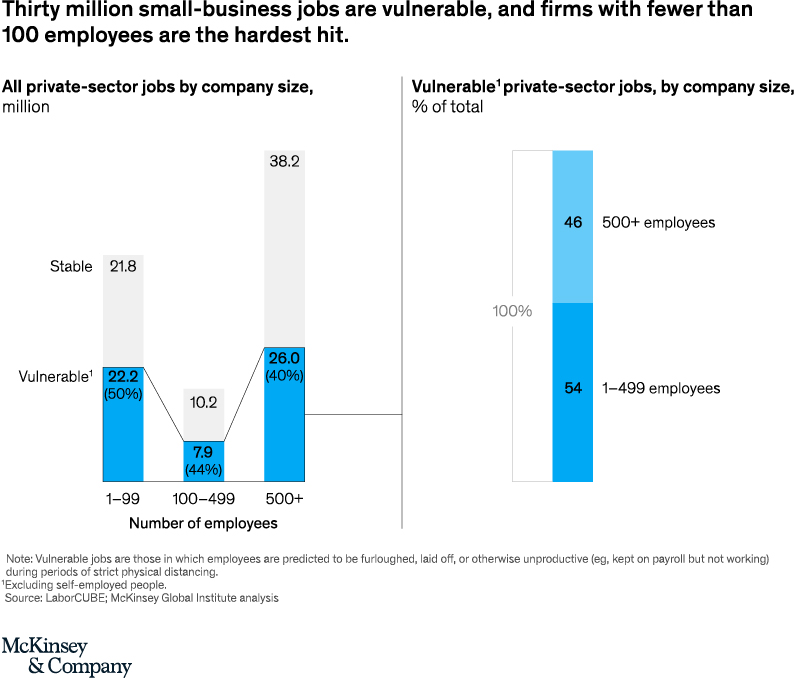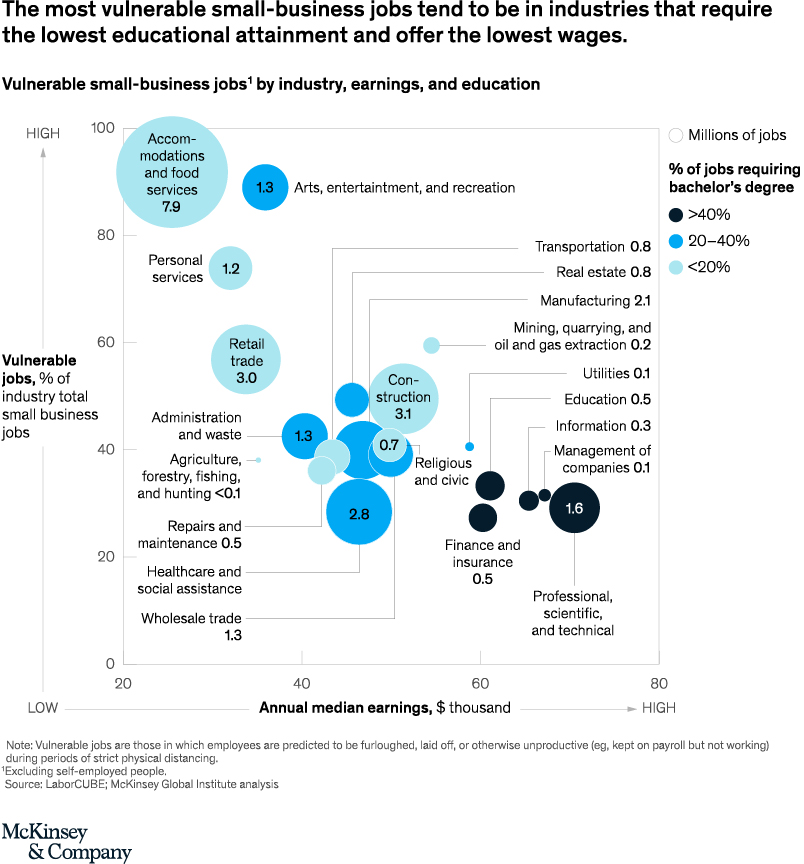COVID-19’s Effect On Jobs At Small Businesses In The United States

A precipitous surge in unemployment continues to shake the US workforce in the wake of COVID-19. Total claims reached 30 million in the six weeks since March 14th. And even as initial steps are underway to ease lockdowns, up to a third of all US jobs remain vulnerable.1 One of the challenges for policy makers and executives is figuring out how to get these employees back to work.
The challenge is especially acute for small businesses (those with 500 or fewer employees), which account for a disproportionate share of the vulnerable jobs.2 Before COVID-19, they provided nearly half of all US private-sector jobs, yet they account for 54 percent (30 million) of the jobs most vulnerable during COVID-19. Specifically, half of jobs at firms with fewer than 100 employees are vulnerable, compared with 40 percent of those at large private-sector employers (Exhibit 1). That estimate is based on our analysis of whether jobs are typically deemed essential and whether they require close proximity to others.

Vulnerable jobs in small businesses largely mirror those in larger ones. Nearly half of these jobs are concentrated in a handful of industries, especially accommodations and food services, construction, retailing, and healthcare and social assistance. Two occupational categories—food service and customer service and sales—account for more than four in ten vulnerable small-business jobs.3 There is a serious danger that the loss of work will disproportionately affect those who can least afford it, since workers in these occupations have lower wages and educational attainment, on average (Exhibit 2).4

Given the distribution of industries and occupations in each of the states, 42 of the 50 states will have a larger share of their vulnerable jobs in small businesses than in large ones. Vulnerable jobs in the other eight states are nearly evenly split between large and small businesses. More than half a million small-business jobs are at risk in 22 of the 50 states. In California, Florida, Illinois, New York, Ohio, Pennsylvania, and Texas the number of vulnerable small-business jobs ranges from 1.0 million to 3.5 million per state.
Small businesses are a recognized proving ground for entrepreneurs, a vibrant source of innovation and competition, and an essential source of employment. They are suppliers and customers to the broader economy and deeply embedded in local communities. Many were vulnerable even before the crisis, with the median small business holding a 27-day cash buffer in reserve.5
The public and private sectors have taken significant steps to support small businesses and their employees. They have made some resources available to help small business weather the immediate crisis.
There is still a long journey ahead. More should be done to understand the underlying fragility of individual sectors and firms over the medium and longer term. Such an analysis will be helpful in understanding how to best support small businesses, their owners, and their employees through and after the COVID-19 crisis.

Good theme !